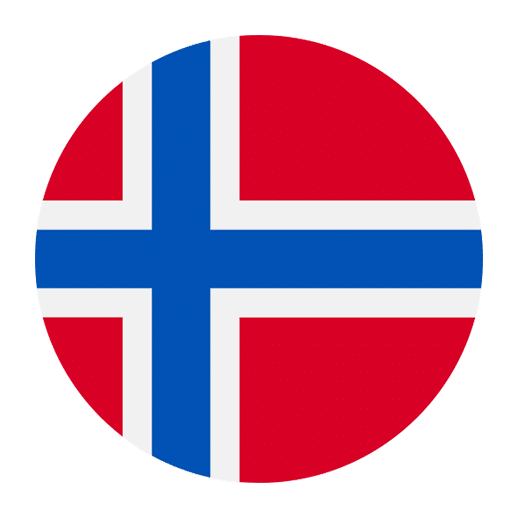Learning a new language can be a challenging yet rewarding experience. For English speakers diving into Norwegian, understanding the nuances of words that look and sound similar but have different meanings is essential. One such pair of words is “møte” and “møtte.” These words can be confusing for learners because they are related but used in different contexts. In this article, we will delve into the intricacies of “møte” and “møtte” to help you use them correctly in your Norwegian conversations.
The Basics: Møte vs Møtte
To start, it’s essential to understand that “møte” and “møtte” are forms of the same verb but used in different tenses.
– **Møte** is the **infinitive** and **present tense** form of the verb, which means “to meet” or “meeting.”
– **Møtte** is the **past tense** form of the same verb, meaning “met.”
Møte: The Present and Infinitive Form
In Norwegian, the verb “møte” is used when you are talking about meeting someone either in the present or as a general action. For example:
– Jeg vil møte nye mennesker. (I want to meet new people.)
– Vi skal møte i morgen. (We will meet tomorrow.)
– Han møter henne ofte. (He meets her often.)
As you can see, “møte” can be used in various contexts to indicate an action that is happening now or will happen in the future. It’s versatile and can be used with different subjects and tenses when combined with auxiliary verbs like “vil” (want to), “skal” (shall/will), or even in simple present tense constructions.
Møtte: The Past Tense Form
On the other hand, “møtte” is used to describe an action that has already taken place. Here are some examples:
– Jeg møtte ham i går. (I met him yesterday.)
– De møtte oss på flyplassen. (They met us at the airport.)
– Vi møtte dem forrige uke. (We met them last week.)
In these sentences, “møtte” clearly indicates that the meeting happened in the past. It’s a straightforward way to convey completed actions involving meetings.
Contextual Usage
To master the usage of “møte” and “møtte,” it’s crucial to understand the context in which each form is appropriate. Context helps in determining whether you’re talking about a present or future meeting or referring to one that has already occurred.
Present and Future Contexts
When discussing plans, intentions, or actions in the present or future, “møte” is your go-to verb form. For example:
– Vi planlegger å møte dem senere. (We plan to meet them later.)
– Skal vi møte på kaféen? (Shall we meet at the café?)
– Hun ønsker å møte flere kollegaer. (She wants to meet more colleagues.)
In these scenarios, “møte” is used because the meetings are either planned for the future or are habitual actions occurring in the present.
Past Contexts
When referring to meetings that have already happened, “møtte” is used. Examples include:
– Jeg møtte en gammel venn i byen. (I met an old friend in town.)
– Vi møtte på en konferanse. (We met at a conference.)
– De møtte henne for første gang i fjor. (They met her for the first time last year.)
These sentences clearly indicate that the meetings are past events, making “møtte” the appropriate choice.
Common Mistakes and How to Avoid Them
Language learners often make mistakes when distinguishing between “møte” and “møtte.” Here are some common pitfalls and tips to avoid them:
Mixing Up Tenses
One of the most frequent mistakes is using “møte” when you should use “møtte” and vice versa. Remember:
– Use **møte** for present and future actions.
– Use **møtte** for past actions.
Practicing with sentences and paying attention to the time frame can help solidify this distinction in your mind.
Overgeneralizing
Another common error is overgeneralizing the rules. For example, assuming “møte” is always correct or “møtte” is always correct. Context is key. Always think about the time frame of the action you’re describing.
Forgetting Auxiliary Verbs
In Norwegian, auxiliary verbs like “skal,” “vil,” and “har” often accompany “møte” and “møtte.” Forgetting these can lead to incorrect sentences. For instance:
– Jeg har møtt henne før. (I have met her before.) – Here, “møtt” is the past participle.
– Jeg skal møte henne i morgen. (I will meet her tomorrow.) – Here, “skal” indicates a future action.
Always check if an auxiliary verb is needed to convey the correct meaning.
Practical Exercises
To help you master “møte” and “møtte,” let’s go through some practical exercises. Try to fill in the blanks with the correct form of the verb.
1. Jeg ________ mange interessante mennesker på festen i går. (møtte)
2. Vi skal ________ på kontoret klokken ti. (møte)
3. Hun ________ ham for første gang forrige uke. (møtte)
4. De ________ ofte på kafeen. (møter)
5. Vi ønsker å ________ flere kunder. (møte)
Check your answers to see if you chose the correct form based on the context provided.
Additional Tips for Mastery
Consistent Practice
Language learning is all about practice. Make a habit of writing sentences using both “møte” and “møtte.” Try to incorporate these verbs into your daily conversations, even if it means talking to yourself in Norwegian.
Engage with Native Speakers
Engaging in conversations with native speakers can significantly improve your understanding and usage of these verbs. Pay attention to how they use “møte” and “møtte” in different contexts.
Use Language Learning Apps
Apps like Duolingo, Babbel, and Memrise offer exercises specifically designed to help you master verb conjugations. Regular use of these apps can reinforce your learning.
Watch Norwegian Media
Watching Norwegian TV shows, movies, and news can expose you to the natural usage of “møte” and “møtte.” Listening to native speakers will help you internalize the correct forms.
Read Norwegian Books
Reading books, articles, and blogs in Norwegian can also provide context for how these verbs are used. Notice the time frames and contexts in which “møte” and “møtte” appear.
Conclusion
Understanding the difference between “møte” and “møtte” is crucial for mastering Norwegian. While “møte” is used for present and future meetings, “møtte” is reserved for past meetings. By paying attention to the context and practicing regularly, you can avoid common mistakes and become more proficient in using these verbs.
Remember, language learning is a journey. Don’t be discouraged by mistakes; they are part of the learning process. Keep practicing, stay curious, and soon you’ll find yourself using “møte” and “møtte” with confidence and ease. Happy learning!

